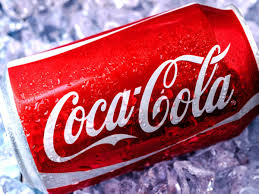
Coca‑Cola’s recent announcement to expand the use of cane sugar in its U.S. beverages marks one of the most significant recipe shifts in the company’s modern history. Long reliant on high‑fructose corn syrup (HFCS) as its primary sweetener, Coca‑Cola is responding to a combination of evolving consumer tastes, health‑focused advocacy and premium branding opportunities. While the company has sold its famed “Mexican Coke” made with cane sugar in select markets for decades, rolling out a nationwide cane‑sugar formula involves far more than swapping one sweetener for another. This move will reverberate through the company’s global supply chain, alter price structures for consumers and reshape the economic landscape for American farmers.
Mounting Consumer and Health Pressures Drive Change
In recent years, mounting criticism of HFCS has been stoked by health‑conscious consumers, nutrition advocates and grassroots campaigns calling for cleaner ingredient labels. Even though scientific consensus holds that cane sugar and HFCS have similar metabolic effects, the term “real sugar” carries a natural‑ingredient cachet that appeals to shoppers seeking simplicity and authenticity. Focus‑group research has shown that a substantial segment of soda drinkers is willing to pay a premium—often 10 to 15 percent more—for beverages made with cane sugar, citing taste, tradition and perceived health benefits.
This consumer shift has coincided with greater media scrutiny of added sugars in packaged foods, as well as growing regulatory pressure to improve transparency around ingredients. By introducing cane sugar more broadly, Coca‑Cola aims to align its flagship product with clean‑label trends while reinforcing nostalgic connections that many consumers already associate with its imported variants. Marketing campaigns accompanying the product relaunch are expected to emphasize heritage and authenticity, tapping into emotional narratives of craftsmanship and simpler times.
Supply Chain Overhaul and Cost Dynamics
Transitioning from HFCS to cane sugar is far from a mere label tweak—it demands a comprehensive overhaul of Coca‑Cola’s manufacturing and logistics network. HFCS arrives at bottling plants in liquid form, directly pumped into mixing vats from rail‑mounted tanks. In contrast, cane sugar is shipped as crystalline granules that require separate storage silos, re‑dissolution equipment and additional sanitation protocols to prevent clumping and microbial growth. Retooling hundreds of bottling facilities across the country will incur significant capital expenditure, from retrofitting sugar dissolvers to upgrading temperature‑controlled warehouses.
On the ingredient side, HFCS has long benefited from a robust domestic corn‑refining industry that offers competitive pricing and reliable supply. Cane sugar, by comparison, is produced in limited quantities in the United States—primarily in Florida and Louisiana—and often commands 50 to 70 percent higher per‑pound costs. To meet national demand, Coca‑Cola must secure imports from major sugarcane exporters such as Brazil, India and Thailand, while navigating tariffs, transportation delays and currency‑rate fluctuations. The net effect is likely to drive up the company’s annual sweetener bill by several hundred million dollars.
Faced with these higher input costs, Coca‑Cola will need to strike a delicate balance between preserving profit margins and avoiding sticker‑shock among consumers already contending with broader inflationary pressures. Analysts predict modest price increases—potentially in the range of 10 to 15 cents per 12‑ounce can—when the new formula fully rolls out. However, the premium positioning of “real sugar” beverages may help cushion consumer resistance, especially if coupled with targeted promotions, loyalty rewards and limited‑edition packaging that underscores the product’s elevated status.
Effects on U.S. Agricultural Sector
While the sweetener pivot promises marketing benefits for Coca‑Cola and a more “natural” image for its soda, it carries profound implications for American agriculture. HFCS production consumes roughly 400 million bushels of corn annually—about 2.5 percent of total U.S. corn output—and supports a network of processing mills across the Midwest. A substantial reduction in HFCS demand would depress corn prices, undermine biofuel co‑products and risk job losses at agribusiness facilities. Corn growers, mill operators and rural communities could face steep declines in revenue unless new markets emerge to absorb surplus grain.
Conversely, domestic sugarcane farmers may enjoy a modest boost in demand, but U.S. cane production is constrained by acreage limits, water availability and weather‑related yield volatility. Even doubling current output would barely scratch the surface of sweetener needs if Coca‑Cola’s entire portfolio transitioned to cane sugar. As a result, much of the incremental demand will flow to international suppliers, reducing U.S. self‑sufficiency and potentially reigniting debates over trade policy, tariffs and agricultural subsidies.
Coca‑Cola has signaled that its rollout will be phased, beginning with limited regional trials and tiered product launches designed to gauge consumer response and operational feasibility. This measured approach aims to soften the economic shock to domestic corn refiners while giving bottlers and distributors time to adapt. Yet the long‑term trajectory is clear: as consumer preferences tilt toward clean‑label ingredients, HFCS’s dominance in the sweetener mix is eroding.
A New Era of Premium Positioning
Beyond ingredient swaps, Coca‑Cola’s cane‑sugar strategy reflects a broader shift toward premiumization in the beverage industry. Consumers are increasingly drawn to craft sodas, artisanal mixers and small‑batch producers that tout superior ingredients and ethical sourcing. By aligning its largest global brand with these values, Coca‑Cola seeks to reclaim share from niche competitors and justify higher price points. Early adopters in specialty retail channels—such as gourmet grocers and upscale cafés—have already reported strong sell‑through rates for cane‑sugar formulations, suggesting untapped potential in markets that prize authenticity over bargain pricing.
At the same time, the move underscores the company’s agility in responding to fluid market dynamics. While HFCS offered decades of cost advantages and scalability, it also carried growing reputational risks. Embracing cane sugar allows Coca‑Cola to reframe its narrative around quality and tradition, leveraging decades of global experience with cane‑sweetened products. The company’s marketing teams are expected to spotlight sustainable sourcing practices, fair‑trade partnerships and support for sugarcane growers in developing regions—further strengthening the brand’s premium credentials.
As Coca‑Cola charts this bold new course, consumers, agribusiness players and policymakers will all watch closely. If successful, the cane‑sugar pivot could redefine the economics of sweeteners in the United States, usher in a new era of beverage premiumization and recalibrate the balance of power between corn and cane industries. For Coca‑Cola, it represents not just a recipe variation, but a strategic bet on the future of indulgence—one that hinges on taste, perception and the enduring allure of “real sugar.”
(Source:www.newsweek.com)
Mounting Consumer and Health Pressures Drive Change
In recent years, mounting criticism of HFCS has been stoked by health‑conscious consumers, nutrition advocates and grassroots campaigns calling for cleaner ingredient labels. Even though scientific consensus holds that cane sugar and HFCS have similar metabolic effects, the term “real sugar” carries a natural‑ingredient cachet that appeals to shoppers seeking simplicity and authenticity. Focus‑group research has shown that a substantial segment of soda drinkers is willing to pay a premium—often 10 to 15 percent more—for beverages made with cane sugar, citing taste, tradition and perceived health benefits.
This consumer shift has coincided with greater media scrutiny of added sugars in packaged foods, as well as growing regulatory pressure to improve transparency around ingredients. By introducing cane sugar more broadly, Coca‑Cola aims to align its flagship product with clean‑label trends while reinforcing nostalgic connections that many consumers already associate with its imported variants. Marketing campaigns accompanying the product relaunch are expected to emphasize heritage and authenticity, tapping into emotional narratives of craftsmanship and simpler times.
Supply Chain Overhaul and Cost Dynamics
Transitioning from HFCS to cane sugar is far from a mere label tweak—it demands a comprehensive overhaul of Coca‑Cola’s manufacturing and logistics network. HFCS arrives at bottling plants in liquid form, directly pumped into mixing vats from rail‑mounted tanks. In contrast, cane sugar is shipped as crystalline granules that require separate storage silos, re‑dissolution equipment and additional sanitation protocols to prevent clumping and microbial growth. Retooling hundreds of bottling facilities across the country will incur significant capital expenditure, from retrofitting sugar dissolvers to upgrading temperature‑controlled warehouses.
On the ingredient side, HFCS has long benefited from a robust domestic corn‑refining industry that offers competitive pricing and reliable supply. Cane sugar, by comparison, is produced in limited quantities in the United States—primarily in Florida and Louisiana—and often commands 50 to 70 percent higher per‑pound costs. To meet national demand, Coca‑Cola must secure imports from major sugarcane exporters such as Brazil, India and Thailand, while navigating tariffs, transportation delays and currency‑rate fluctuations. The net effect is likely to drive up the company’s annual sweetener bill by several hundred million dollars.
Faced with these higher input costs, Coca‑Cola will need to strike a delicate balance between preserving profit margins and avoiding sticker‑shock among consumers already contending with broader inflationary pressures. Analysts predict modest price increases—potentially in the range of 10 to 15 cents per 12‑ounce can—when the new formula fully rolls out. However, the premium positioning of “real sugar” beverages may help cushion consumer resistance, especially if coupled with targeted promotions, loyalty rewards and limited‑edition packaging that underscores the product’s elevated status.
Effects on U.S. Agricultural Sector
While the sweetener pivot promises marketing benefits for Coca‑Cola and a more “natural” image for its soda, it carries profound implications for American agriculture. HFCS production consumes roughly 400 million bushels of corn annually—about 2.5 percent of total U.S. corn output—and supports a network of processing mills across the Midwest. A substantial reduction in HFCS demand would depress corn prices, undermine biofuel co‑products and risk job losses at agribusiness facilities. Corn growers, mill operators and rural communities could face steep declines in revenue unless new markets emerge to absorb surplus grain.
Conversely, domestic sugarcane farmers may enjoy a modest boost in demand, but U.S. cane production is constrained by acreage limits, water availability and weather‑related yield volatility. Even doubling current output would barely scratch the surface of sweetener needs if Coca‑Cola’s entire portfolio transitioned to cane sugar. As a result, much of the incremental demand will flow to international suppliers, reducing U.S. self‑sufficiency and potentially reigniting debates over trade policy, tariffs and agricultural subsidies.
Coca‑Cola has signaled that its rollout will be phased, beginning with limited regional trials and tiered product launches designed to gauge consumer response and operational feasibility. This measured approach aims to soften the economic shock to domestic corn refiners while giving bottlers and distributors time to adapt. Yet the long‑term trajectory is clear: as consumer preferences tilt toward clean‑label ingredients, HFCS’s dominance in the sweetener mix is eroding.
A New Era of Premium Positioning
Beyond ingredient swaps, Coca‑Cola’s cane‑sugar strategy reflects a broader shift toward premiumization in the beverage industry. Consumers are increasingly drawn to craft sodas, artisanal mixers and small‑batch producers that tout superior ingredients and ethical sourcing. By aligning its largest global brand with these values, Coca‑Cola seeks to reclaim share from niche competitors and justify higher price points. Early adopters in specialty retail channels—such as gourmet grocers and upscale cafés—have already reported strong sell‑through rates for cane‑sugar formulations, suggesting untapped potential in markets that prize authenticity over bargain pricing.
At the same time, the move underscores the company’s agility in responding to fluid market dynamics. While HFCS offered decades of cost advantages and scalability, it also carried growing reputational risks. Embracing cane sugar allows Coca‑Cola to reframe its narrative around quality and tradition, leveraging decades of global experience with cane‑sweetened products. The company’s marketing teams are expected to spotlight sustainable sourcing practices, fair‑trade partnerships and support for sugarcane growers in developing regions—further strengthening the brand’s premium credentials.
As Coca‑Cola charts this bold new course, consumers, agribusiness players and policymakers will all watch closely. If successful, the cane‑sugar pivot could redefine the economics of sweeteners in the United States, usher in a new era of beverage premiumization and recalibrate the balance of power between corn and cane industries. For Coca‑Cola, it represents not just a recipe variation, but a strategic bet on the future of indulgence—one that hinges on taste, perception and the enduring allure of “real sugar.”
(Source:www.newsweek.com)














